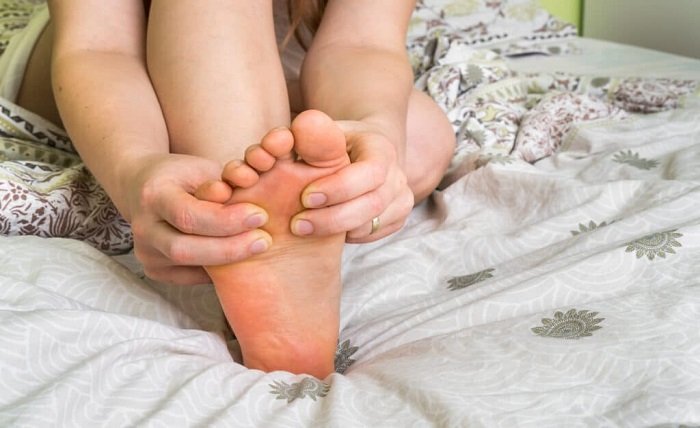Soft Soles Ahead: Must-Try Remedies for Foot Hydration

Dry, cracked, or tired feet are more than just a cosmetic concern—they’re often uncomfortable and can even signal deeper skin issues. As seasons change or with age and lifestyle, the skin on our feet tends to become rough, calloused, or painfully dry. While most people focus on skincare for the face and hands, feet are often neglected. The result? Rough heels, peeling skin, and soreness. But don’t worry—keeping your feet soft, smooth, and healthy is completely achievable with the right hydration routine. Let’s dive into simple, must-try remedies for foot hydration that will have you walking on clouds in no time.
Why Do Feet Dry Out So Easily?
Our feet carry us through life, yet they get minimal care. Unlike other parts of the body, feet have fewer oil glands. This makes them more prone to dryness, especially when exposed to dry air, friction from shoes, or improper hygiene. Standing for long hours or wearing ill-fitting footwear can also exacerbate the problem. Additionally, hot showers, cold weather, and walking barefoot can all strip the skin of its natural moisture. Understanding the causes of dry feet helps in finding the most effective remedy.
The Power of Proper Cleansing
Hydration begins with clean feet. Many people ignore how they wash their feet, often letting soap trickle down in the shower without actually scrubbing or rinsing properly. That’s not enough. Gently exfoliating with a pumice stone or foot scrub two to three times a week can remove dead skin cells, allowing moisturizers to penetrate better. Use a mild, moisturizing cleanser instead of harsh soaps that can dry out the skin. After cleansing, gently pat the feet dry, especially between the toes, to avoid fungal infections.
Soak Your Way to Softness
One of the most relaxing and effective ways to hydrate your feet is with a good foot soak. Warm water mixed with ingredients like Epsom salts, apple cider vinegar, or even a bit of coconut milk can do wonders. A 15–20 minute soak softens the skin, relaxes the muscles, and prepares your feet to better absorb moisturizers. For extra hydration, add a tablespoon of olive oil or honey—both natural humectants that lock in moisture.
Foot Balm: A Deep Moisture Essential
Effective foot care starts with the right moisturizing product. Thicker and richer than typical lotions, these specialized creams are designed to deeply penetrate the skin, delivering long-lasting hydration. Many formulas include nourishing ingredients like shea butter, beeswax, peppermint oil, and urea, which help soften rough areas, soothe irritation, and repair cracks. For best results, apply it at night and slip on a pair of cotton socks to lock in moisture and enhance absorption.
Whether you need daily nourishment or targeted relief for severely dry heels, choose a product that suits your skin’s specific needs. With consistent use, especially during colder months, your feet can stay soft, healthy, and comfortable.
Lock in Moisture With Overnight Care
Nighttime is the perfect opportunity to give your feet the pampering they deserve. After cleansing and applying your chosen moisturizer or foot balm, slip on a pair of breathable cotton socks. This locks in hydration, enhances absorption, and prevents the balm from rubbing off on your sheets. Over time, this habit can lead to noticeable improvements in skin texture and softness. Think of it as a nighttime ritual—just like applying face cream before bed, your feet also need dedicated attention.
Home Remedies That Actually Work
For those who prefer natural options, several home remedies have proven effective in hydrating dry feet:
- Coconut Oil: Rich in fatty acids, it helps retain moisture and provides antibacterial benefits.
- Aloe Vera Gel: Soothing and lightweight, aloe vera can cool and repair cracked skin.
- Banana Mash: Ripe bananas act as a natural moisturizer and exfoliator when mashed and applied as a mask.
- Honey and Milk Soak: This combo softens skin and restores hydration naturally.
Using these remedies two to three times a week, in combination with a consistent care routine, can make a significant difference
When to See a Professional
If dry skin turns into deep cracks, persistent pain, or bleeding, it’s best to consult a podiatrist. Chronic dryness may be a sign of underlying conditions like eczema, athlete’s foot, or even diabetes. A professional can guide you toward medicated treatments or recommend customized care for your specific needs.
Final Thoughts
Hydrated feet are not only aesthetically pleasing but also crucial for overall foot health. Regular cleansing, exfoliating, moisturizing, and using a foot balm as part of your care routine can turn rough, cracked heels into soft, happy soles. Whether you lean on natural home remedies or rely on store-bought solutions, consistency is key. Start giving your feet the love they deserve today, and you’ll feel the difference with every step you take.




